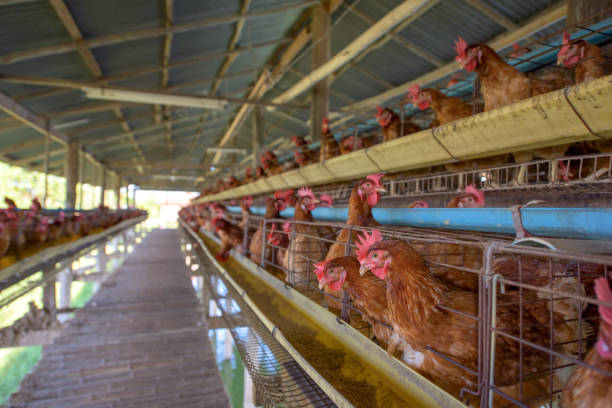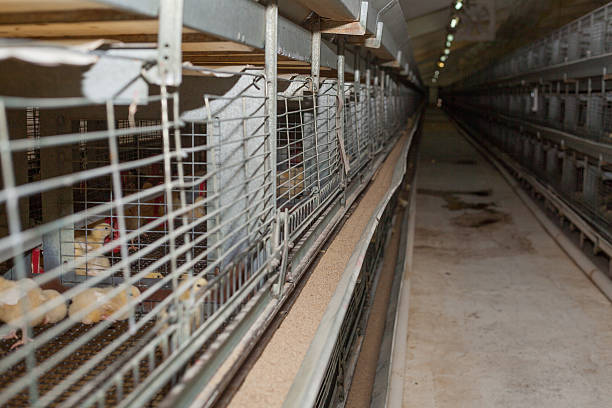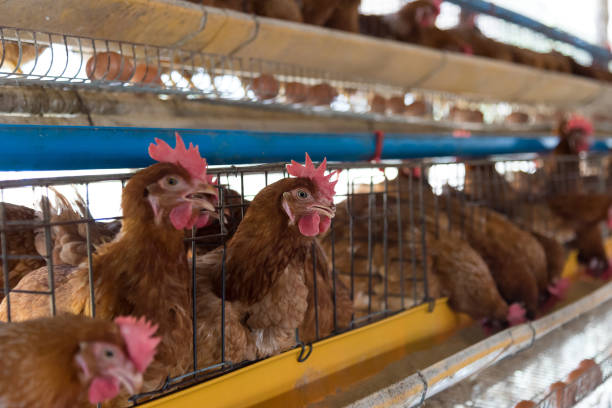Mauritius Poultry Farming: Battery Cage Layout Strategies for a 20,000 Chick Operation
Mauritius Poultry Farming: Battery Cage Layout Strategies for a 20,000 Chick Operation
Mauritius, a beautiful island nation in the Indian Ocean, relies heavily on agriculture, and poultry farming plays a particularly significant role in its economy and food security. Egg production, in particular, is a thriving sector, and optimizing poultry farm operations is crucial for sustained success. For a poultry farmer in Mauritius planning to raise 20,000 egg-laying chickens, selecting and implementing an efficient battery cage layout is paramount. This article will delve into the critical aspects of battery cage systems and provide practical strategies for designing an optimal layout for such a large-scale operation in the Mauritian context.
**Understanding Battery Cage Systems: The Foundation for Efficient Poultry Farming**
Battery cage systems, also known as layer cages, are designed to house multiple chickens in individual or small-group compartments. These cages are typically arranged in rows and tiers, maximizing space utilization within the poultry house. Battery cages offer several advantages that contribute to increased efficiency and profitability:
* *Increased Stocking Density:* Battery cages allow for a higher density of birds compared to floor systems like deep litter, maximizing the use of available space within the poultry house. In a land-scarce environment like Mauritius, this is extremely important. You want to put the most birds in the least space, but obviously you need a safe and liveable environment.
* *Improved Egg Collection:* Eggs roll out of the cage onto a collection trough, simplifying the collection process, reducing egg breakage, and minimizing labor costs. This is especially crucial in big farms with a lot of birds, egg collection can take a long time without this kind of system.
* *Better Disease Control:* Separating birds into individual cages reduces the spread of diseases and makes it easier to identify and isolate sick birds, which is very important, you don’t want to have a spread of sickness in your flock.
* *Reduced Feed Wastage:* The cage design minimizes feed spillage, leading to better feed conversion ratios and lower overall feed costs.
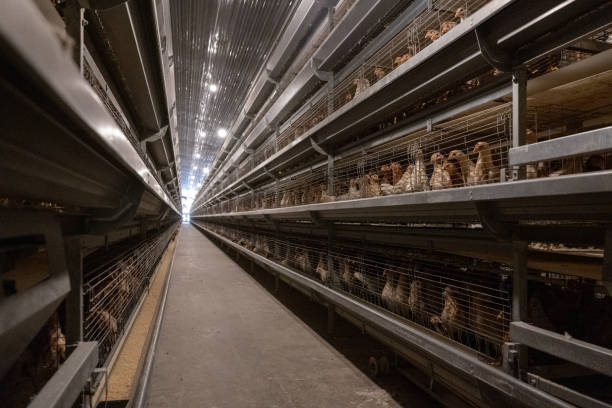
* *Enhanced Manure Management:* Manure collection is simplified with battery cage systems, improving hygiene and reducing the risk of ammonia buildup, which can negatively impact bird health.
**Key Considerations for Battery Cage Layout Design in Mauritius**
Designing an effective battery cage layout requires careful consideration of several factors specific to the Mauritian context and the farmer’s specific goals.
1. *Poultry House Dimensions and Orientation:*
* Accurately measure the length, width, and height of the poultry house. This measurement will significantly affect the configuration and dimensions of the battery cage system.
* Consider the orientation of the poultry house in relation to sunlight. Ideally, the house should be oriented to minimize direct sunlight exposure, which can lead to increased temperatures and heat stress, something that can damage the entire flock.
* Ensure sufficient ventilation throughout the poultry house. Natural ventilation can be effective, but mechanical ventilation may be required in warmer climates or during peak summer months.
2. *Cage Type and Configuration:*
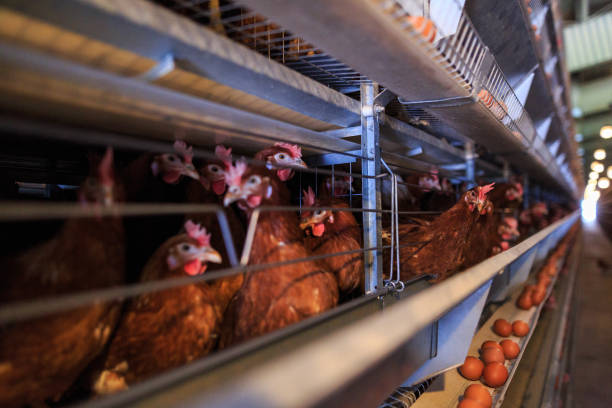
* *A-Frame Cages:* These cages have a sloping roof and are typically arranged in two or three tiers. They offer good ventilation and easy access for egg collection.
* *H-Frame Cages:* These cages have a horizontal frame and are arranged in multiple tiers. They maximize space utilization but may require more sophisticated ventilation systems.
* Select a cage type that suits the available space, budget, and management preferences.
* Consider the number of birds per cage. Common configurations include 3-5 birds per cage. Providing adequate space per bird is crucial for their well-being and egg production.
3. *Feeding and Watering Systems:*
* *Automatic Feeding Systems:* These systems deliver feed to the cages through a trough or chain, ensuring consistent feed availability and reducing labor costs.
* *Nipple Drinking Systems:* These systems provide clean and fresh water to the birds on demand, minimizing water wastage and reducing the risk of contamination.
* Ensure that the feeding and watering systems are easily accessible to all birds in the cages.
* Consider the capacity of the feeding and watering systems to meet the needs of 20,000 chickens.
4. *Manure Removal System:*
* *Belt Manure Removal System:* This system uses a conveyor belt to remove manure from under the cages, improving hygiene and reducing ammonia emissions. A belt system can make it easier and more efficient to maintain your coop.
* *Scraper System:* This system uses a scraper to remove manure from the poultry house floor. Scrapers tend to require manual intervention but can be more robust for certain construction limitations. Be sure to evaluate your needs and what issues the system could solve for you or create.
* Select a manure removal system that is efficient, reliable, and easy to maintain. And also comply with the Mauritian environmental regulation.
* Consider the frequency of manure removal to minimize ammonia buildup and maintain good air quality.
5. *Lighting System:*
* Install a lighting system that provides adequate light intensity and duration to stimulate egg production. Think about using a dimmer too!
* Use energy-efficient LED lights to reduce electricity costs.
* Implement a lighting program that mimics the natural light cycle, with gradual increases in light duration during the laying period.
6. *Ventilation System:*
* Ensure adequate ventilation to remove stale air, moisture, and ammonia from the poultry house.
* Natural ventilation can be effective in some cases, but mechanical ventilation may be required to maintain optimal air quality.
* Consider installing fans and air inlets to promote air circulation and prevent heat stress.
7. *Climate Control:*
* Mauritius experiences warm and humid weather, so it is essential to implement climate control measures to maintain a comfortable environment for the chickens.
* Consider installing cooling systems, such as evaporative coolers or fogging systems, to reduce temperatures during hot weather.
* Insulate the poultry house to minimize heat gain during the day and heat loss at night.
**Designing the Battery Cage Layout: A Step-by-Step Approach**
1. *Determine the Number of Cages:*
* Divide the total number of chickens (20,000) by the number of birds per cage (e.g., 4 birds/cage) to determine the number of cages required (e.g., 5,000 cages).
2. *Calculate the Cage Dimensions:*
* Obtain the dimensions of the chosen cage type (length, width, height).
* Consider the spacing between cages for easy access and maintenance.
3. *Plan the Cage Rows and Tiers:*
* Arrange the cages in rows, leaving sufficient space for walkways and equipment movement.
* Determine the number of tiers per row, considering the poultry house height and ventilation requirements.
* Ensure that all cages are easily accessible for feeding, watering, egg collection, and bird management.
4. *Map Out the Feeding and Watering Systems:*
* Design the layout of the automatic feeding and watering systems, ensuring that they reach all cages efficiently.
* Consider the placement of feed storage bins and water tanks.
5. *Plan the Manure Removal System:*
* Determine the optimal location for the manure removal system equipment.
* Ensure that the manure removal system can effectively remove manure from all cages.
6. *Design the Lighting and Ventilation Systems:*
* Plan the placement of lights and fans to provide uniform illumination and airflow throughout the poultry house.
* Consider the location of air inlets and outlets to maximize ventilation efficiency.
7. *Create a Detailed Layout Diagram:*
* Draw a detailed diagram of the battery cage layout, including the dimensions of the poultry house, cages, walkways, equipment, and lighting and ventilation systems.
* Use the diagram to visualize the layout and identify any potential problems or inefficiencies.
**Additional Tips for Optimizing Battery Cage Layout in Mauritius**
* *Seek Expert Advice:* Consult with poultry equipment suppliers and experienced poultry farmers in Mauritius for guidance on selecting and implementing the best battery cage layout for the specific needs. Many companies, such as Livi Machinery, will consider your particular needs and climate.
* *Consider Environmental Factors:* Mauritius has a warm and humid climate, so it is crucial to design the battery cage layout to minimize heat stress and maintain good air quality.
* *Prioritize Animal Welfare:* Provide adequate space per bird, access to fresh water and feed, and a comfortable environment to promote animal welfare and egg production.
* *Ensure Biosecurity:* Implement strict biosecurity measures to prevent the introduction and spread of diseases.
* *Regularly Monitor and Adjust:* Monitor the performance of the battery cage system and make adjustments as needed to optimize egg production and bird health.
* *Use Quality Equipment:* Invest in high-quality battery cages and equipment from reputable suppliers. Even more so, buy from companies that are well known for their customer support.
* *Compliance:* Ensure that the battery cage layout complies with all relevant Mauritian regulations and standards for poultry farming.
**The Importance of Automation**
For a 20,000-bird operation, automation is not just a luxury, it’s a necessity. Automating key processes like feeding, watering, egg collection, and manure removal can significantly reduce labor costs, improve efficiency, and enhance the overall management of the farm. Automatic feeding systems ensure that each bird receives the correct amount of feed, reducing waste and promoting consistent growth and egg production. Automatic watering systems provide a constant supply of clean water, preventing dehydration and improving bird health. Automatic egg collection systems reduce egg breakage, minimize labor costs, and improve egg quality. Automated manure removal systems improve hygiene, reduce ammonia emissions, and create a healthier environment for the chickens.
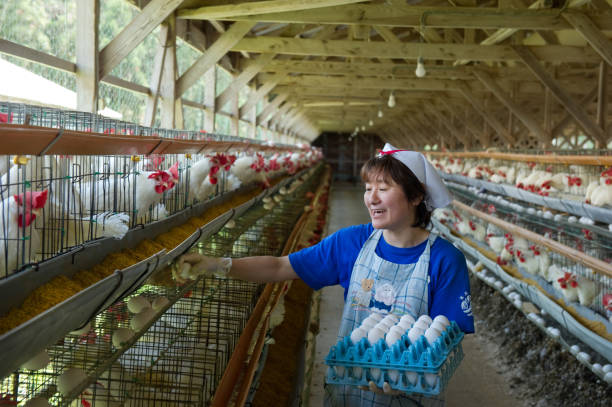
**Integrating Technology for Enhanced Management**
Modern poultry farms are increasingly relying on technology to monitor and manage their operations. Sensors can be used to track temperature, humidity, ammonia levels, and other environmental factors, allowing farmers to make real-time adjustments to maintain optimal conditions. Data analytics can be used to identify trends and patterns in egg production, feed consumption, and bird health, helping farmers to make informed decisions and improve overall performance. Remote monitoring systems allow farmers to keep an eye on their operations from anywhere, enabling them to respond quickly to any problems or emergencies.
**Investing in Training and Education**
Even with the best battery cage layout and the most advanced technology, success in poultry farming ultimately depends on the skills and knowledge of the people managing the operation. Investing in training and education for farm workers is essential to ensure that they understand best practices for poultry management, biosecurity, and animal welfare. Training programs can cover a wide range of topics, including feeding and watering management, disease prevention and control, egg handling and storage, and equipment maintenance. By investing in training and education, poultry farmers in Mauritius can create a skilled and knowledgeable workforce that is capable of maximizing the productivity and profitability of their operations.
By considering these factors and implementing a well-designed battery cage layout, poultry farmers in Mauritius can create a thriving and profitable egg production enterprise. Careful planning, attention to detail, and a commitment to best practices are essential for success in this competitive industry. Mauritius is an island of opportunity, and investing in effective and well-implemented poultry practices can lead to a sustainable and profitable outcome for years to come.



